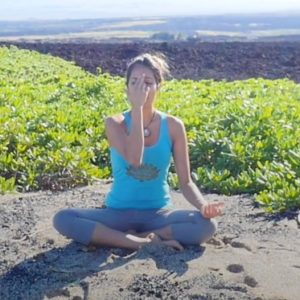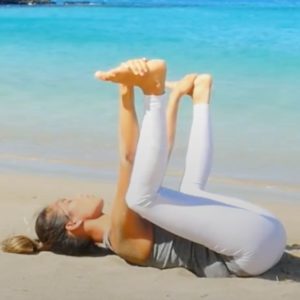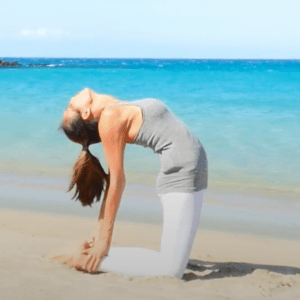Two poses for today are Head to Knee Forward Bend and Revolved Head to Knee
Head to Knee Forward Bend and Revolved Head to Knee
Head to knee forward bend
Head-to-Knee Pose (Janu Sirsasana) is an excellent stretch to relieve tight hamstrings, the muscles in the back of your thighs. If you tend to dislike doing a seated forward bend with both legs straight, this pose may come as a pleasant surprise. Taking your stretch one leg at a time allows you to go a lot deeper and feels so much better.
Steps
Begin sitting in Staff Pose with both legs outstretched in front of you.
- Adjust the flesh under your seat so that your sit bones are firmly anchored.
- Bend your left knee and bring the sole of your left foot to your right inner thigh.
- Square your torso over your extended right leg. Begin to bring your torso down to your leg by tipping your pelvis forward so that the bend initiates from your hips instead of your lower back.
- Keep your right foot flexed while pressing the back of the right thigh down toward the floor.
- When you reach your maximum forward bending limit, you have a choice: You can maintain your straight spine and long neck in an active position, or you can relax your heart and head down toward the extended leg, allowing the spine to round. Do whichever one feels better.
- If your hands reach your foot, hold your foot. If not, you may hold on to your ankle or calf, or place your hands on the floor wherever they reach.
- On each inhale, extend the spine long. On each exhale, deepen the forward bend.
- Stay here for five to 10 breaths and then straighten both legs, shake them out, and repeat the pose on the other side.
Benefits
- Head-to-Knee Pose stretches the hamstrings, hips, and groin muscles.
- Runners and those who engage in sports that require running will often benefit from this good stretch for tight hamstrings.
- It is also a restorative pose that is said to help relieve stress and calm your mind.
Revolved Head to Knee
The Revolved Head to Knee Pose involves a forward bend with a twist to give you a great stretch. You will most often see it in the second half of a yoga session after your body has had time to limber up. It is a good addition to a seated yoga practice.
Steps
- Begin in Seated Wide-Legged Straddle.
- Bend your right knee and bring the sole of your right foot to your inner left thigh.
- Lean your torso as far to the left as possible, bringing the backside
- of your left forearm to the floor inside your left leg. If you don’t make it that far over, bring your left arm to your shin or higher up towards the thigh instead.
- Begin to twist your upper body away from your left leg, opening your chest to the ceiling. If your left arm is inside the left leg, you can press the arm into the leg for resistance as you twist.
- Lift your gaze upwards, letting your neck and head follow the twist in the spine.
- Raise your right arm overhead and then let the right biceps come over your right ear. Keep your right arm straight.
- As an alternative, bend the right elbow and hold the back of your head with your right hand. Don’t let the right elbow collapse inward. Work to keep it opening to the right.
- Keep your left foot flexed.
- After several breaths, untwist and come back up to sitting position. Switch the position of your legs for a twist to the other side.
Benefits
- This pose stretches the hamstrings and opens the shoulders, chest, and groin.
- The side stretch can help open up your ribcage and could improve your breathing.
- As a spinal twist, it traditionally is believed to improve digestion and relieve headaches and insomnia.
- It is also considered to be a calming pose. The stretch feels great if you have a job where you sit all day or if you have tight hamstrings from sports such as running.




